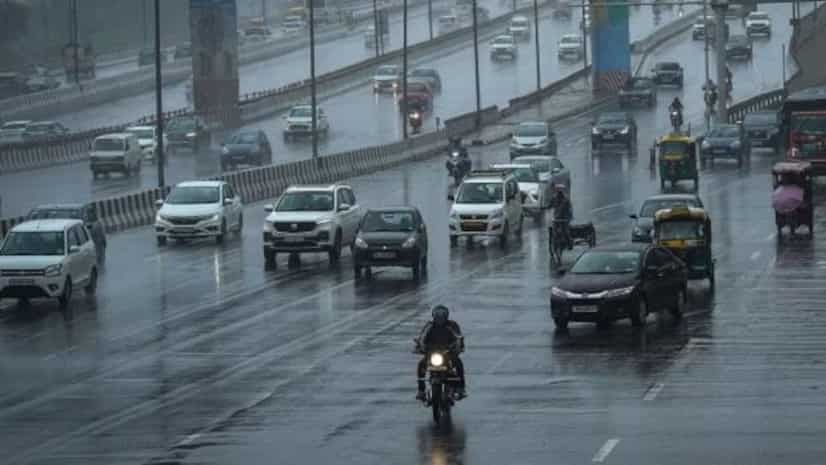Delhi Weather News: A light spell of rain across Delhi-NCR early Saturday brought a slight drop in temperature and a bit of comfort to residents. But the relief was short-lived, with overall air quality still stuck in the “poor” to “very poor” bracket across several locations.
As per the Central Pollution Control Board (CPCB), the Air Quality Index (AQI) across several monitoring stations remained above 200 early on Saturday, a number that still signals unhealthy air.
AQI still in danger zone
Among the worst-hit areas, Anand Vihar recorded an AQI of 222, DTU area logged 206, and Dwarka Sector 8 stood at 210. ITO offered a slight improvement with a reading of 146, while the area around India Gate saw some relief with AQI falling to 17, a notable drop from Friday’s 250.
Despite the rain, Delhi’s air is far from clean. On Friday morning, the city’s average AQI had already slipped into the “very poor” category at 305, with places like Wazirpur and Mundka gasping for air at “severe” levels—422 and 419, respectively.
GRAP Stage 1 kicks in across Delhi-NCR
With increasing pollution levels rise again, the Commission for Air Quality Management (CAQM) has brought back Stage 1 rules under the Graded Response Action Plan (GRAP). These measures are put in place when the Air Quality Index (AQI) is between 201 and 300.
Dusty winds behind the smog
So, what’s behind this sudden spike? Experts say a mix of dust-laden winds and pre-monsoon atmospheric instability is to blame. The India Meteorological Department (IMD) reported a “significant cloud mass” over Delhi-NCR, which led to strong gusts of wind particularly in the Palam area blowing at 30–40 km/h. These winds stirred up fine dust particles, making visibility worse and air quality even more hazardous.
Also Read:Delhi Rains: Dense fog, rain in Delhi-NCR parts; 29 trains delayed
‘This is only temporary,’ warn experts
While the brief rain helped settle some airborne pollutants, environmental scientists caution residents against taking this as a sign of lasting improvement. “This is only a temporary respite,” one expert noted, adding that pre-monsoon turbulence and dry spells may worsen pollution again in the coming days.
(With inputs from agencies)
Anurag Dhole is a seasoned journalist and content writer with a passion for delivering timely, accurate, and engaging stories. With over 8 years of experience in digital media, she covers a wide range of topics—from breaking news and politics to business insights and cultural trends. Jane's writing style blends clarity with depth, aiming to inform and inspire readers in a fast-paced media landscape. When she’s not chasing stories, she’s likely reading investigative features or exploring local cafés for her next writing spot.






